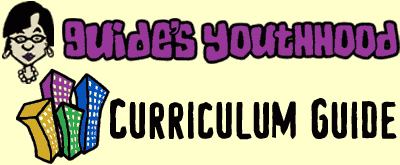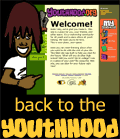National Academic Standards Addressed in The High School
The following national academic standards are addressed in The High School:
National Social Studies Standards
http://www.socialstudies.org/standards/
- Culture
- Time, Continuity, and Change
- People, Places, and Environments
- Individual Development and Identity
- Individuals, Groups, and Institutions
- Power, Authority, and Governance
- Production, Distribution, and Consumption
- Science, Technology, and Society
- Global Connections
- Civic Ideals and Practices
National Economics Standards
http://www.ncee.net/ea/standards/
- Scarcity
- Marginal Cost/Benefit
- Allocation of Goods and Services
- Role of Incentives
- Gain from Trade
- Specialization and Trade
- Markets - Price and Quantity Determination
- Role of Price in Market System
- Role of Competition
- Role of Economic Institutions
- Role of Money
- Role of Interest Rates
- Role of Resources in Determining Income
- Profit and the Entrepreneur
- Growth
- Role of Government
- Using Cost/Benefit Analysis to Evaluate Government Programs
- Macroeconomy-Income/Employment Prices
- Unemployment and Inflation
- Monetary and Fiscal Policy
National English Language Standards
http://www.ncte.org/about/over/standards?source=ql
- Students read a wide range of print and non-print texts to build an understanding
of texts, of themselves, and of the cultures of the United States and the
world; to acquire new information; to respond to the needs and demands of
society and the workplace; and for personal fulfillment. Among these texts
are fiction and nonfiction, classic, and contemporary works.
- Students read a wide range of literature from many periods in many genres
to build an understanding of the many dimensions (e.g., philosophical, ethical,
aesthetic) of human experience.
- Students apply a wide range of strategies to comprehend, interpret, evaluate,
and appreciate texts. They draw on their prior experience, their interactions
with other readers and writers, their knowledge of word meaning and of other
texts, their word identification strategies, and their understanding of textual
features (e.g., sound-letter correspondence, sentence structure, context,
graphics).
- Students adjust their use of spoken, written, and visual language (e.g.,
conventions, style, vocabulary) to communicate effectively with a variety
of audiences and for different purposes.
- Students employ a wide range of strategies as they write and use different
writing process elements appropriately to communicate with different audiences
for a variety of purposes.
- Students apply knowledge of language structure, language conventions (e.g.,
spelling and punctuation), media techniques, figurative language, and genre
to create, critique, and discuss print and non-print texts.
- Students conduct research on issues and interests by generating ideas and
questions, and by posing problems. They gather, evaluate, and synthesize
data from a variety of sources (e.g., print and non-print texts, artifacts,
people) to communicate their discoveries in ways that suit their purpose
and audience.
- Students use a variety of technological and informational resources (e.g.,
libraries, databases, computer networks, video) to gather and synthesize
information and to create and communicate knowledge.
- Students develop an understanding of and respect for diversity in language
use, patterns, and dialects across cultures, ethnic groups, geographic regions,
and social roles.
- Students whose first language is not English make use of their first language
to develop competency in the English language arts and to develop understanding
of content across the curriculum.
- Students participate as knowledgeable, reflective, creative, and critical
members of a variety of literacy communities.
- Students use spoken, written, and visual language to accomplish their own
purposes (e.g., for learning, enjoyment, persuasion, and the exchange of
information).
National Standards for Family and Consumer Science Education
http://ideanet.doe.state.in.us/octe/facs/natlstandards.htm
- Career, Community, and Family Connections
- Consumer and Family Resources
- Consumer Services
- Facilities Management and Maintenance
- Family
- Family and Community Services
- Food Production and Services
- Food Science, Dietetics, and Nutrition
- Hospitality, Tourism, and Recreation
- Housing, Interiors, and Furnishings
- Human Development
- Interpersonal Relationships
- Nutrition and Wellness
- Parenting
- Textiles and Apparel
About Academic Standards
For more information on academic standards, visit the National Center on
Secondary Education and Transition Academic
Standards Web Topic.
|















